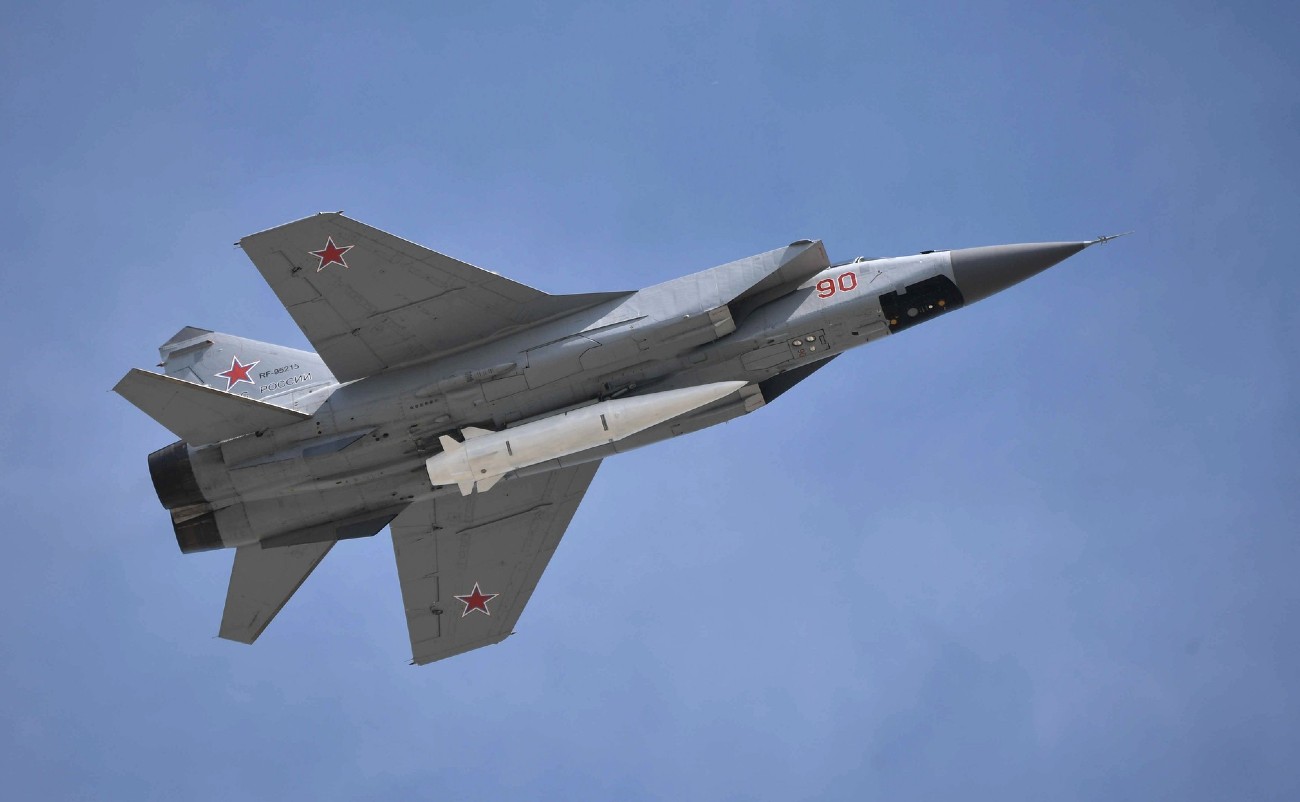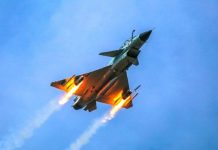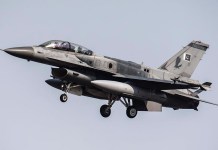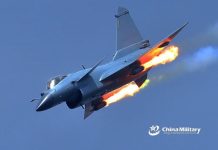The Russian Air Force has deployed its cutting-edge fighters with long-range missiles to ‘kill’ Ukrainian warplanes without giving them a chance to blink.
Despite being outmatched in capability and outnumbered by the Russian Air Force, Ukraine has implemented an air denial plan by deploying air defenses and anti-aircraft weapons that have kept the Russian fighters at bay.
This has put Russia in a difficult spot despite having a numerical advantage of 10:1 against the Ukrainian Air Force.
Besides, during air combat in the last nine months of the war, Russia lost its aircraft faster than it could produce. It is pertinent to note that Russia’s capacity to follow Ukrainian operations has been constrained by its inability to operate its manned spy planes above the battlefield freely.
However, even in the absence of air superiority, one aircraft is holding the fort and giving a hard time to the Ukrainians – the MiG-31 Foxhound – a twin-seater, supersonic, interceptor fighter aircraft that can be integrated with a host of long-range missiles.
The MiG-31 interceptor flying high-altitude patrols has reportedly shot down several Ukrainian fighters by firing its potent long-range Vympel R-37M air-to-air missiles.
The speed, range, and altitude performance of the Ukrainian planes and missiles are insufficient to counter these interceptors effectively, claims a recent report of the Royal United Services Institute (RUSI) think tank.
According to Justin Bronk, Nick Reynolds, and Jack Watling, writing for RUSI, the Russian Air Force’s defensive patrols have proven highly effective against Ukrainian attack aircraft and fighters, with the MiG-31BM and R-37M long-range air-to-air missile being especially problematic for the Ukrainian fighter pilots.
The three regiments of the MiG-31BM, employing about 90 of these fighters, are operational with the Air Force. As noted by Forbes, at least one of these regiments has been deployed to Belbek air base in Crimea to conduct interception missions and defense patrols against Ukraine.
MiG-31s Killing Ukrainian Fighters
The RUSI report states that even the best Sukhoi Su-27 interceptors of the Ukrainian air force cannot match the MiG-31’s height, speed, or range. The heavyweight fighter can dash at Mach 2.5 for brief periods and fly up to 60,000 feet out to 450 miles (or more than 700 kilometers).
MiG-31 operators can fire a single, underbelly R-37M missile at targets up to 200 miles away (more than 300 kilometers) from their perch in the air.
However, the missile performs best at ranges no greater than 80 miles (over 128 kilometers). In contrast, a Ukrainian Su-27 can only launch a Vympel R-27 missile 50 kilometers away. This has given a clear advantage to the Foxhounds that can shoot at enemy jets and escape unscathed.
The Russian Ministry of Defense has stated on several occasions in the recent past that these fighter jets are deployed for defense patrols in assigned areas. Once the crew locates a target and confirms it is a hostile aircraft, air-to-air missiles are launched to eliminate it.
Russian MiG-31 downs Ukrainian Su-24 in Look-down Shoot-down attack from high altitude pic.twitter.com/wa6nKnpp3j
— Vijainder K Thakur (@vkthakur) October 27, 2022
In late October, a MiG-31 equipped with a combination of RVV-BD (or R-37M) and RVV-SD (or R-77) missiles shot down a Su-24 of the Ukrainian Air Force, as previously reported by EurAsian Times.
The Russian Air Force maintained round-the-clock patrols in eight zones over Ukraine when the Ukrainian army began twin counteroffensives in the east and south in late August. Each patrol consisted of a pair of MiG-31s or Sukhoi Su-35s.
??Su-35 taking part in SMO armed with a LR R-37M air-air missile
The other missiles are the R-77-1 (AAM) & X-31P (ARM)
Fighters armed with R-37M can target Ukr aircraft without entering the detection zone of Ukr air-def radars, especially when acting in conjunction with AWACS pic.twitter.com/fyoVdIBRI9
— @Sh..ab (@ShehabBawazeer2) November 2, 2022
The patrols were looking for Ukrainian Su-25, Su-24, and Mikoyan MiG-29 attack planes aiding the counteroffensives. Indian Air Force veteran Squadron Leader Vijainder K Thakur (retd) informed the EurAsian Times that the R-37M could reach its target within a few minutes, making it near hypersonic.
Since the counteroffensives began in late August, Ukraine lost four MiG-29s, six Su-25s, a Su-24, and one Su-27, according to independent analysts.
“The VKS has been firing up to six R-37Ms per day during October,” Bronk, Reynolds, and Watling wrote. “The extremely high speed of the weapon, coupled with very long effective range and a seeker designed for engaging low-altitude targets, makes it particularly difficult to evade,” they added.
Russia's Belbek Airbase in Crimea looks untouched this morning after reports of an incident there yesterday. Russia said it shot down a drone. Note MiG-31 Foxhounds there as well as usual Su-34s, Su-30s, Su-27s (and old non-flying Fulcrums and Flankers etc) Via Planet Labs 1/X pic.twitter.com/SIwcw3MsqW
— Tyler Rogoway (@Aviation_Intel) August 19, 2022
Russia has reportedly lost just one MiG-31 to date. In August, a Ukrainian drone attempted to attack the Belbek Air Base in Crimea, which at the time had MiG-31 Foxhounds as well as usual Su-34s, Su-30s, Su-27s (and old non-flying Fulcrums and Flankers, etc.). The drone was later shot down, and the Foxhounds escaped unharmed.
The MiG-31s have outflanked the aging and archaic fighter jets of the Ukrainian Air Force. While the exact numbers cannot be independently confirmed due to flimsy details and a mismatch in the count, these interceptor fighters compensate for the lack of air superiority over Ukraine.
Russia has also deployed a variant of its MiG-31 armed with the hypersonic ‘Killjoy’ missile to Belarus, rattling the West.

Ukraine, on its part, has been pleading with the international community for advanced fighter jets to combat the superior Russian Air Force. New reports indicate that SAAB Gripens, designed and developed specifically to combat Russian fighters, could be the aircraft of choice for Ukraine.
In the meantime, it seems to be a free run for Russia’s Foxhounds that specifically conduct offensive operations on their defense patrol missions without harm.
- Contact the author at sakshi.tiwari9555(at)gmail.com
- Follow EurAsian Times on Google News




